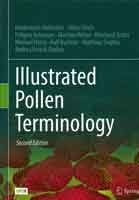
click image to zoom
Heidemarie Halbritter
Silvia Ulrich
Friògeir Grimsson
Martina Weber
Reinhard Zetter
Michael Hesse
Ralf Buchner
Matthias Svojtka
Andrea Frosch-Radivo
This book offers a fully illustrated compendium of glossary terms and basic principles in the field of palynology, making it an indispensable tool for all palynologists. It is a revised and extended edition of "Pollen Terminology. An illustrated handbook,’” published in 2009. This second edition, titled "Illustrated Pollen Terminology" shares additional insights into new and stunning aspects of palynology. In…
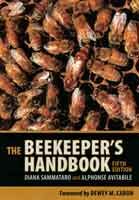
click image to zoom
Diana Sammataro
Alphonse Avitabile
The Beekeeper's Handbook is an invaluable resource for both beginner and veteran beekeepers. "Since the publication of the first edition of the handbook in 1978, many thousands of novice and experienced beekeepers have relied on this book as the preferred single-volume guide to beekeeping.” British Journal of Entomology and Natural History "The Beekeeper's Handbook has guided thousands of beginning and…
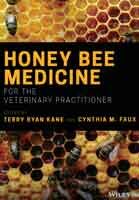
click image to zoom
Terry Ryan Kane
Cynthia M. Faux
Honey Bee Medicine for the Veterinary Practitioner offers an authoritative guide to honey bee health and hive management. Designed for veterinarians and other professionals, the book presents information useful for answering commonly asked questions and for facilitating hive examinations. The book covers a wide range of topics including basic husbandry, equipment and safety, anatomy, genetics, the diagnosis and management of…
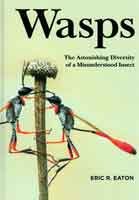
click image to zoom
Wasps are far more diverse than the familiar yellowjackets and hornets that harass picnickers and build nests under the eaves of our homes. These amazing, mostly solitary creatures thrive in nearly every habitat on Earth, and their influence on our lives is overwhelmingly beneficial. Wasps are agents of pest control in agriculture and gardens. They are subjects of study in…
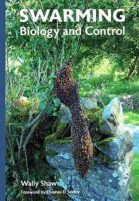
click image to zoom
One of the key events in the bee keeping year (for both the bees and the beekeeper) is the swarming season. In order to obtain the maximum honey yield from colonies, the beekeeper needs to manage the natural swarming process. Much has been written about swarming but this often takes the form of rather prescriptive instructions for swarm control which…
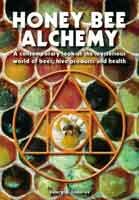
click image to zoom
This is the first English edition of an important book on "Honey bee alchemy" by a Polish researcher. An entirely original, unparalleled work dedicated to the mysterious aspects of the life of bees, the magical properties of the products they produce, and the chemical composition associated with their medicinal properties. This book will be of great interest to beekeepers where…
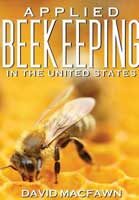
click image to zoom
The beginner as well as the experienced professional will garner a hive full of information from Applied Beekeeping in the United States. Honeybee information has been compiled and published in book form in hopes that beekeepers in the United States and worldwide will benefit. There are many topics in this book not contained in more theoretical books and through 342…
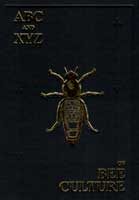
click image to zoom
Keith S. Delaplane
James E. Tew
Jennifer Berry
Clarence H. Collison
Ann Harman
Kim Flottum
• 42nd Edition (2020) • Over 800 pages packed with information • Hundreds of Color photos and illustrations • More than 50 Contributors • A MUST for every beekeeper large and small • A mix of reference, the how and why things are done and a history of how beekeeping got where it is today! In 1877 A. I. Root…
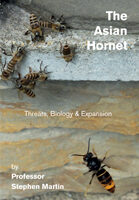
click image to zoom
The accidental introduction of the Asian hornet or more accurately the yellow-legged hornet into France and South Korea over ten years ago and its subsequent spread to neighbouring countries has been worrying both governments and beekeepers alike. Many people are now seeking more information on this new threat to our beloved honey bees. Hornet biology is very different to that…
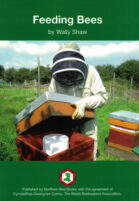
click image to zoom
Honey bees collect two types of food material; nectar and pollen. With the collection of nectar there is no evidence that there is any selection based on its nutrient value, other than as a source of energy (their dietary carbohydrate). Pollen is their source of protein and lipids (fats). By contrast, foraging for this vital material is much more complex…
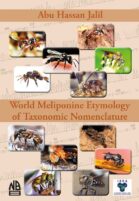
click image to zoom
Describes the Etymology of every name ever used in Meliponine Taxonomy Worldwide. For enthusiast who has ever wondered how and why specific epithets and exotic sounding names are given. Some may not even sound scientific yet so important and relevant to the locality and some even describe their anatomy. This compendium will be very useful to students of Entomology and…
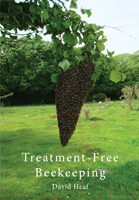
click image to zoom
Since varroa arrived in Europe and America in the 1980's, most beekeepers have found it necessary to treat their colonies with chemicals in order to avoid heavy colony losses. But a minority of beekeepers have managed to care for their colonies without the use of chemicals and have done so with not just tolerable colony losses, but with losses that…
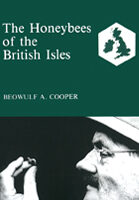
click image to zoom
A most important book on breeding, mating behaviour, selection and all aspects of the native British bee by a GIANT of beekeeping. This classic title, long out of print, has now been reissued by the Bee Improvement and Bee Breeders Association. Beowulf Cooper was one of the founding members of The Bee Improvement & Bee Breeders' Association (BIBBA) and responsible for…
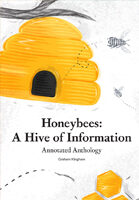
click image to zoom
• Do bees sleep? • What is in bee poo? • Do they have knees? • What about the ‘birds and the bees’? • Why do bees have a hump? Many of the honeybee's life mysteries are answered here .. Micrographs of pests in your honey and diseases in the hive .. Some contentious thoughts on the future management of…
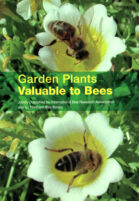
click image to zoom
Most people are now aware that our insect population has come under severe pressure due to changes in their environment. This awareness is causing an increasing interest in what can be done to support our insect life for our own good. We are seeing a gradual change in agricultural & horticultural attitudes and practice that should contribute towards improvement in…
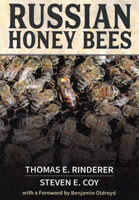
click image to zoom
Thomas E. Rinderer
Steven E. Coy
Russian Honey Bees are a stock of honey bees that were bred to be resistant to Varroa mites and have good beekeeping functionality for both honey production and pollination. This book describes the project to produce the Russian honey bee stock, conducted over 20 years of work by the combined efforts of scientists and beekeepers. Practical information on the management…
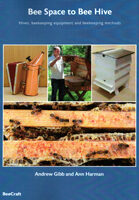
click image to zoom
"This book provides a fascinating insight into how beehives, beekeeping equipment and beekeeping methods have developed over the centuries. Lengthy observation enabled the discovery of the importance of bee space by Revd LL Langstroth, and after this discovery the ingenuity of many beekeepers has solved numerous problems associated with colony management. The evolution of ideas and creations by many well…
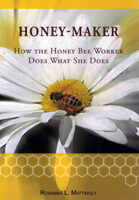
click image to zoom
Your Guide to One of the Most Amazing Species on the Planet Today! Established along with European settlers, honey bees are an essential part of the American landscape. Yet, how do we define a honey bee? And how does the honey bee accomplish the many tasks that aid not only the survival of the colony but our own as well?…

click image to zoom
Jay is an imaginative bee scientist who communicates clearly using every-day language. His book is an absorbing, provocative, entertaining and uplifting read. Scientific research sometimes produces information that is difficult to take advantage of in practice; until later translational research fills the gaps enabling us to understand the fuller picture. Thus, we tend to progress in waves as initial frustration…
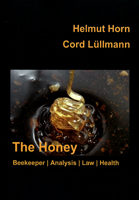
click image to zoom
Helmut Horn
Cord Lüllmann
Honey is one of nature's most valuable raw materials - and has been for over twelve thousand years. Its constituents are valued in nutrition as well as in medicine and cosmetics. Like no other agricultural product, honey production is in harmony with nature, because the bee depends on an intact environment. This highly topical standard work provides everything about honey:…
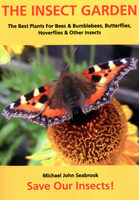
click image to zoom
Save our insects! This book contains: • Tips on how to have a beautiful, easy to manage garden completely in tune with nature. • Chapters on bees, bumblebees, butterflies and hoverflies and the plants they prefer to visit for pollen and nectar. • Scores for over 520 plants indicating how good they are for insect biodiversity from new research completed…
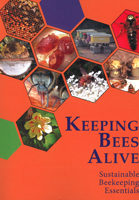
click image to zoom
In five decades entomologist Dr. Larry Connor has been a university professor, run a bee-breeding program and become established as a key voice in the beekeeping world. He has written dozens of articles for bee journals and a number of books, including Increase Essentials, Bee Sex Essentials, Queen Rearing Essentials, Bee-sentials: A Field Guide, Swarm Essentials (with Steve Repasky), and…
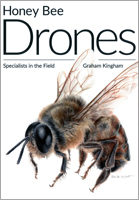
click image to zoom
This book concentrates only on the drone - the male honey bee. It provides details regarding the drone's internal and external anatomy, production and development, behaviour, role in the hive, genetics and more. Copiously illustrated, the book also discusses the latest research updates on drones. Graham Kingham is a retired mechanical quality engineer who keeps a few hives in Devon.…
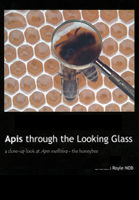
click image to zoom
This book is based on a lecture "Honeybee Anatomy" which was first given at the BBKA Spring Convention 2009 held in Stoneleigh. It provides a close up look at the external and internal structures of the honeybee. The majority of photos were taken using a digital camera mounted on a trinocular dissection microscope. Dissection of the bee to study the…
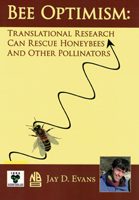
click image to zoom
Jay is an imaginative bee scientist who communicates clearly using every-day language. His book is an absorbing, provocative, entertaining and uplifting read. Scientific research sometimes produces information that is difficult to take advantage of in practice; until later translational research fills the gaps enabling us to understand the fuller picture. Thus, we tend to progress in waves as initial frustration…
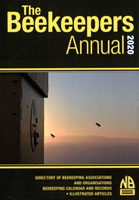
click image to zoom
Now in its 36th year of publication, the Annual is the longest running Annual in the history of British beekeeping. It serves as a reference source, a diary, a hive record resource (which will prove invaluable throughout the year) and a set of articles guaranteed to entertain and amuse. The perfect stocking filler for the enthusiastic beekeeper.
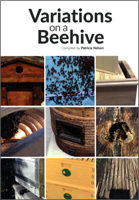
click image to zoom
"Trish Nelson is to be commended on compiling this brilliant book. Whether you are happy with the type of hive and style of management you use, if you are trying to decide which is best suited to your particular situation and needs, or if you are just plain curious, this book will answer all of your questions and satisfy your…
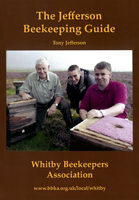
click image to zoom
All three generations of the Jefferson Family from Whitby, North Yorkshire are famed for their beekeeping knowledge and expertise. This 41 page booklet is full of advice and beekeeping knowledge that only long time experience can bring. Northern Bee Books strongly recommends this title. Tony writes in his introduction .. "
You may well gather as you thumb through this "booklet"…
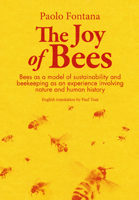
click image to zoom
Paolo Fontana is an Italian naturalist and researcher at the Edmund Mach Foundation in Trento (Italy). President of the World Biodiversity Association, he has also been a beekeeper for more than 30 years. As an entomologist he has taken part in numerous research expeditions, studying the faunas of Mediterranean as well as tropical countries and describing dozens of species new…
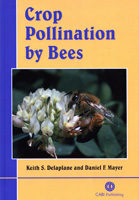
click image to zoom
Keith S. Delaplane
Daniel F. Mayer
The collapse of the ubiquitous honey bee population during the past 20 years has caused a pollination vacuum for many crops. Surveys and grower experience indicate that a crisis exists in our pollinator populations. This book is an accessible, practical and authoritative research-based guide to using bees for crop pollination. It emphasises conserving feral bee populations as well as more…
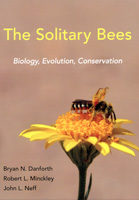
click image to zoom
Bryan N. Danforth
Robert L. Minckley
John L. Neff
While social bees such as honey bees and bumble bees are familiar to most people, they comprise less than 10 percent of all bee species in the world. The vast majority of bees lead solitary lives, surviving without the help of a hive and using their own resources to fend off danger and protect their offspring. This book draws on…
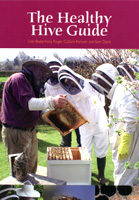
click image to zoom
Dan Basterfield
Roger Cullum-Kenyon
Ivor Davis
This second edition of the Healthy Hive Guide is provided to help both new and experienced beekeepers identify problems within their honey bee hives. Each of the images has a short explanation; however it is clear that not all problems manifest themselves in exactly the same way every time. It is sometimes enough for beekeepers to recognise that they may…
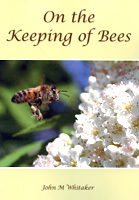
click image to zoom
A new edition of a popular handbook by John Whitaker, a Yorkshire beekeeper who is heavily involved in the education of beekeepers. John comments that "beekeeping is the most fascinating and absorbing of pastimes. This book developed from the course that I have presented to new beekeepers at my local association in Yorkshire for several years. One of the joys…
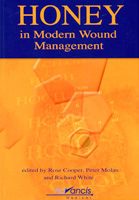
click image to zoom
Rose Cooper, Peter Molan and Richard White
Recent years have seen a reintroduction in the use of honey as a modern wound management product. Records found in the Edwin Smith Surgical Papyrus tell us that honey was used extensively in Egyptian medicine. This dates back to around 1700 BC, but is thought to contain knowledge from a much earlier era, possibly 3000-2500 BC. In the Ebers Papyrus…

click image to zoom
In this hardback book, Adrian Horridge sets out the curious and contentious history of how the visual system of the honeybee came to be understood and how, in his view, the current accepted theory is completely wrong. Based on his own meticulous experimental work and historic analysis of past literature over many years, Horridge tells the story of a century…
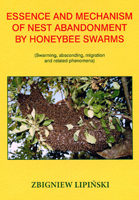
click image to zoom
This hardback book is a new updated edition of the work which was awarded a Gold Medal at the XXXVII Apimondia Congress, Durban 2001. It reviews in great detail the factors responsible for swarming, nest abandonment and related phenomena. This volume is very well researched and listed in its 312 pages over 50 pages of references. Not really suitable for the…

click image to zoom
This annotated bibliography of American books on bees and beekeeping is the first of its kind. Interest in bees and beekeeping continues to grow in the world. Approximately 3,750 entries are recorded, through which can be traced not only the growth of bee science and beekeeping methods, but also the history of beekeeping in America. The task of locating and…
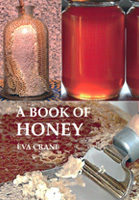
click image to zoom
Upon her death in 2007, the New York Times acknowledged that Eva Crane wrote some of the most important books on bees and apiculture. A Book of Honey is one of her seminal works and must be on the shelves of anyone who is serious about understanding honey. Not only does it describe how and why bees make honey, but…
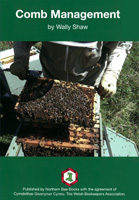
click image to zoom
In a sense the combs in a honey bee nest are an extension of the bees that made them and it is really the bees and combs together that constitute the colony. In fact, the average honey bee worker spends 95% of her life on the combs in the hive. The combs are built to be multi-purpose in the sense…
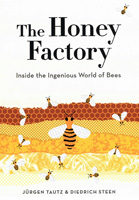
click image to zoom
Jürgen Tautz
Diedrich Steen
Beehives might look like seething anarchy at first glance, but bees know exactly what they are doing. The universe of the beehive is an intricately organised, delicately balanced ecosystem. From the queen to the lowliest worker bees, each bee plays its part in the whole. The Honey Factory plunges the reader into the invisible life of a bee colony and…
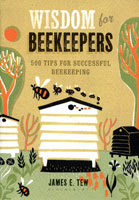
click image to zoom
A comprehensive collection of 500 beekeeping tips written by life-long beekeeper Jim Tew. This title covers all aspects of beekeeping including: • Becoming a beekeeper • Beekeeping equipment • The beekeeping year • Getting live bees • Colony management • Honey • Bee by-products • Pollination • Ailments • Bee biology It is an ideal introductory read for newcomers to…
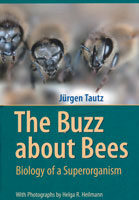
click image to zoom
With spectacularly beautiful colour photographs and an easily understandable text The Buzz about Bees tells the story of honeybees in a new perspective. Based on the latest data, notably from his own research group, Jürgen Tautz provides a wonderful insight into the realms of bees. “Whereas bee colonies were once seen as perfect societies of selfless workers and drones ruled…
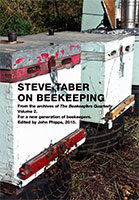
click image to zoom
This collection of articles from The Beekeepers Quarterly, over a period of ten years, gather together the words of wisdom by a Great American Beekeeper. There is much that can be learnt from this reading this volume that will improve all beekeeping practice. Researcher, commercial beekeeper and finally bee geneticists - with experience in both America and Europe it was…

click image to zoom
Noël Sweeney is a practising barrister who specialises in criminal, human rights and animal law. This volume deals with all aspects of the law concerning bees and beekeepers, drawing upon case history from both UK and American judgements. Bees-at-Law considers the role of bees gauged by the duty and responsibility their owners and beekeepers owe to other people. He lists…
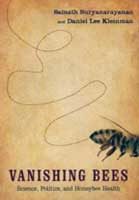
click image to zoom
Daniel Kleinman
Sainath Suryanarayanan
In 2005, beekeepers in the United States began observing a mysterious and disturbing phenomenon: once-healthy colonies of bees were suddenly collapsing, leaving behind empty hives full of honey and pollen. Over the following decade, widespread honeybee deaths -some of which have come to be called Colony Collapse Disorder (CCD) -have continued to bedevil beekeepers and threaten the agricultural industries that…
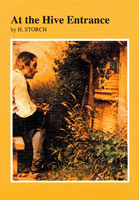
click image to zoom
This observation Handbook - shows you , in the words of the author. How to know what happens inside the hive by observation on the outside.
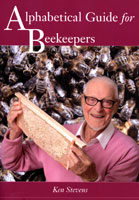
click image to zoom
A weighty tome by a former County Beekeeping Instructor of Devon and later Sussex which could be seen as an A - Z of all beekeeping knowledge
.
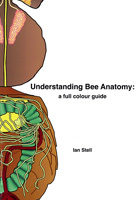
click image to zoom
Understanding Bee Anatomy aims to do two things, to explain the structure of this fascinating insect and, through stunning images, to reveal the intricate detail. Dr Stell has applied his knowledge of the human body in describing the honeybee, system by system. The book starts with a chapter on the developmental stages, showing the internal changes taking place from the…
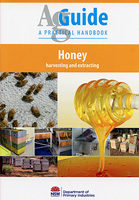
click image to zoom
Doug Somerville
Bill Winner
We have taken in stock this Australian title which deals in depth with commercial and semi-commercial harvesting & extraction. It informs of best practices leading to optimum quality, together with the threats to quality occurring through poor handling skills or facility design shortcomings.
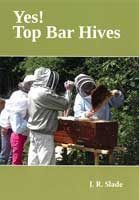
click image to zoom
The author suggests that Top Bar hives offer a gentler way of practicing the craft. "We have a duty to our bees and as beekeepers we must be in the forefront of change for nature, not mere puppets in some commercial enterprise". This volume gives advice on managing colonies in top bar hives and provides notes and illustrations for the…




















































